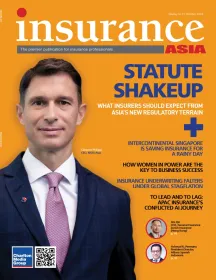
South Korea’s insurers register better capital adequacy ratio Q3’23
FSS promises the industry to help maintain sufficient capital buffers amid volatile and uncertain financial market conditions.
As of the end of September 2023, domestic insurance companies in South Korea showed an increase in their capital adequacy ratios under the Korean Insurance Capital Standard (K-ICS), data from Korea’s Financial Supervisory Service (FSS) showed.
When transitional measures are applied, the overall capital adequacy ratio stood at 224.2%, a slight increase of 0.6 percentage points from 223.6% three months prior.
Specifically, life insurance companies saw a growth of 0.2 percentage points to 224.5%, and non-life insurers experienced a 1.1 percentage point increase to 223.8%.
However, without the transitional measures, the capital adequacy ratios under K-ICS were 201.8%, marginally up by 0.1 percentage points from 201.7% three months earlier.
In this scenario, life insurance companies witnessed a decrease of 0.3 percentage points to 195.9%, while non-life insurance companies enjoyed a rise of 0.6 percentage points to 210.6%.
ALSO READ: Korea's driver insurance booms, navigates regulatory challenges
The available capital under K-ICS was reported at KRW261.7t ($200b) at the end of September 2023, showing an increase of KRW2.2t ($1.7b) from three months earlier.
This growth in available capital was attributed to a decrease in insurance contract liabilities due to rising interest rates and an increase in new insurance contracts during the July-to-September period.
Additionally, the required capital under K-ICS increased by KRW 0.7t ($530b) to KRW116.7t ($88b). Notably, lapse risk saw an expansion of KRW3.6t, ($2.7b) while market risk decreased by KRW 0.9 trillion ($680m), leading to a rise in life/long-term insurance risk by KRW 2.2t ($1.7b).
With a capital adequacy ratio of 224.2% under K-ICS as of the end of September 2023, the FSS is committed to closely managing and supervising insurance companies to ensure they maintain sufficient capital buffers amid volatile and uncertain financial market conditions.
(KRW1.00 = $0.00075)



















 Advertise
Advertise


